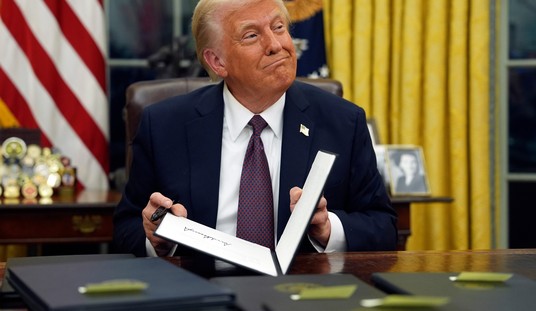We can call it progress or invention without mercy. Regardless, the arc is clear: airpower began as nothing more than a crude terror from balloons and zeppelins. It's graduated into industrial-scale destruction. And now? It's folded back down into the hands of a squad on a hillside.
The latest chapter in our long story is the new Switchblade 600 Block 2; something that loiters for more than fifty minutes, survives salt spray, hands off control across long ranges, and strikes with an anti-armor punch that once needed heavy platforms.
It's a combination that simultaneously makes it a useful weapon for commanders while unnerving targets.
From Bonfires to Burning Cities
In the early days, aerial attacks felt random and offered greater theatrics. Tossed out of planes, they were meant to frighten as much as to wound.
When the Second World War arrived, the industrial centers of cities became fair game; entire city sections burned, meeting the goal of hamstringing your enemy's war effort.
Methods changed with each passing generation, where engineers and pilots learned to aim small, while hitting the bullseye.
We're left with paradoxical results: There's less rubble filling the skyline after hitting a target, while behind the curtain, the invisible expertise and expensive equipment go into choosing that rooftop instead.
The platform shrank as the logistics that feed it grew.
What the Switchblade Family Used to Do
The first generation of the Switchblade family earned a reputation for simplicity: A platoon carries it in a pack, sets it up quickly, and converts a reconnaissance asset into a kinetic tool in minutes.
The original version gave foot patrols the capability to eliminate a hard target without calling for air support or risking vehicle and, most importantly, human safety.
Since the drone could dawdle for a time, casualties and collateral damage often decreased because single targets were identified visually, and when the moment was right, an operator committed to action.
Strikes such as these were surgical with a human eye on the trigger.
What Block 2 Adds to the Ticket
Block 2 pushes the envelope further, offering about 20% more endurance, improved communications, and M-code GPS, which provides the opportunity to work in contested electromagnetic settings, earns an IP67 rating for maritime use, and hands off control across a networked chain that stretches for miles.
Also added to the list is an onboard processor capable of aiding in target recognition and a secondary payload bay, which allows crews to tailor effects.
Simply put, now a small unit has persistence, reach, and more intelligent sensors. These advances don't replace judgment; they speed up the hunt.
Why the Pentagon Wants Scores of Them
Like yawns, cheap is contagious; for a fraction of a helicopter sortie or a heavy guided missile, a platoon releases a tube-launched loitering munition.
Programs such as these give field commanders thousands of inexpensive, smart systems to saturate a battlespace with options instead of waiting for scarce platforms.
When the stars align, or in this case, cost, networkability, and autonomy align, the doctrine tilts toward lethality, distributed. Now, small units threaten high-value targets without having to wait.
It doesn't sound like much, but changes like this are helpful when fighting a war on many small fronts at once.
The Moral Credit and the Moral Debt
Even though precision makes killing look small on the map, the morality lightens up.
If a roof is struck instead of an entire neighborhood block, we celebrate the reduction in collateral harm.
Meanwhile, the human decision compresses: There are fewer hands, faster choices, with more reliance on chips and sensors. Any moral responsibility moves away from a collective deliberation (those bloody dumb meetings where nobody makes a decision, but all have opinions) and sits on a screen.
We're at a point where democracies need to decide where to require a human pause and accept machine speed.
These are now political choices as much as technical ones.
An Evolution From a Sledgehammer
There was a time in the not-so-recent past when the battle plan was a sledgehammer, when we leveled whole neighborhoods to ensure a target was hit.
That's where we're coming from; aerial killing was a tool set that evolved from lumberyard tools to surgical instruments.
Now, a scalpel works in a single room as a team of technicians runs imaging, calibrates instruments, and keeps the lights on.
This new method highlights cleaner cuts from a team that's far more specialized, yet the stakes still involve human blood.
The brilliance is in the craft; the danger is in normalizing a world where their small machines hum while remaining relatively still, and a single operator decides life and death, but from a distance.
What Comes Next
Arriving together, we expect scale, modularity, and network autonomy. Manufacturers are preparing to ramp factories and deliveries, and buyers are planning forces that aren't built around one single platform, but around many small, replaceable nodes.
Payloads, software-defined, let leaders swap mission sets simply by exchanging code. Groups of loitering drones act as coordinated sensors and shooters instead of being a single-shot projectile.
Meanwhile, the free market plays its part: The countermeasures industry will boom, contested radios, jamming, and those will shock supply chains, leading to new market fragilities.
We're not looking at a single-trajectory future; it's going to become an arms race between cheap swarms and tools meant to stop them.
Final Thoughts
The Switchblade 600 Block 2 doesn't decide the fate of a nation; it nudges tactics, accelerating a long trend towards distributed lethality.
It means good news for a commander needing options, but it's sobering news for somebody who wants clear rules about when machines may take a life.
Engineers keep writing improved code, while voters and lawmakers need to write the laws constraining it.
The history of aerial warfare began with zeppelins dropping terror from above, and the following several chapters shouldn't be left to firmware and supply orders alone.










